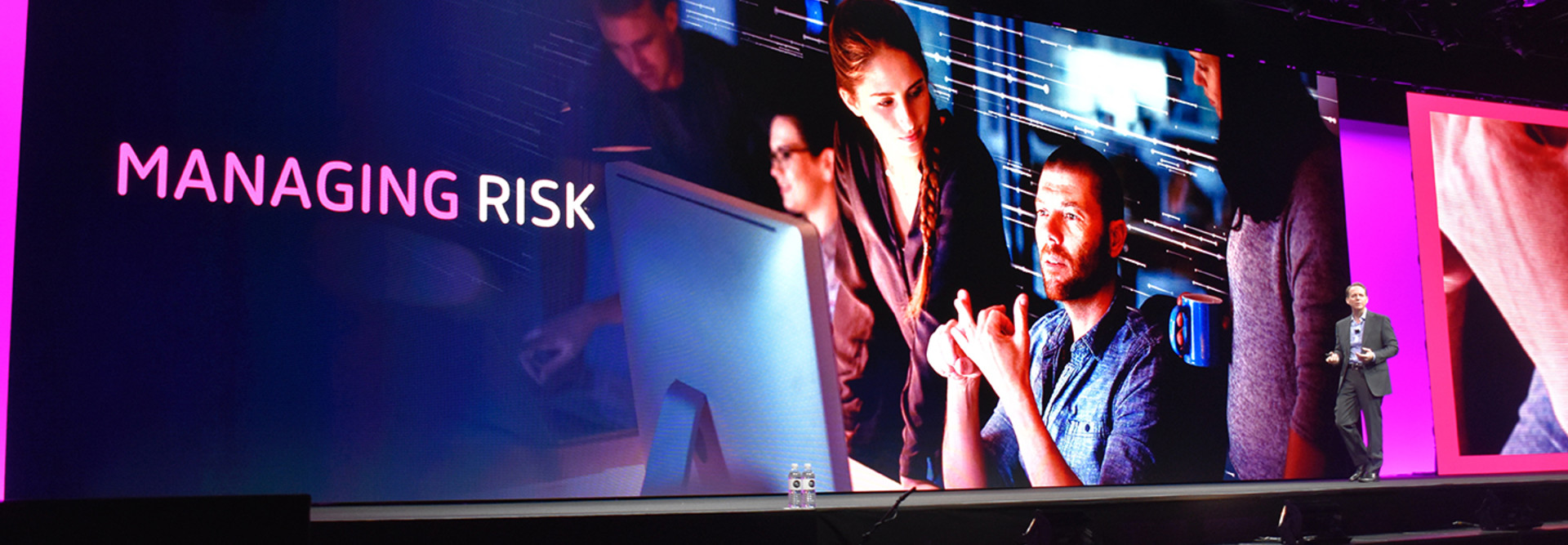Citrix Synergy 2018: Citrix Touts New Analytics Service That Offers Security Insights
How can businesses enhance their cybersecurity without inhibiting users’ productivity? It’s a clear tension, but one that Citrix hopes to solve with a healthy dose of intelligence.
At a keynote session at the Citrix Synergy 2018 conference on May 8 in Anaheim, Calif., Citrix CEO David Henshall announced the broad availability of Citrix Analytics, the company’s new security platform that uses machine learning to help organizations detect anomalies and enforce security policies. Citrix initially introduced the service at Synergy 2017 and formally announced it last month.
The goal of the new platform is to give businesses greater flexibility to provide security for their unique IT environments and users. Henshall said that the tactics organizations historically have used in security “are just not working anymore. They’re too cumbersome. They’re too expensive.”
SIGN UP: Get more news from the BizTech newsletter in your inbox every two weeks!
Citrix’s Security Vision Focuses on Apps and Data
Cyberthreats are only going to get more complex, Henshall said, so Citrix is focused on “a security model that we think is future-proof” because it protects apps and content, and not devices.
“The challenge, of course, is balancing these competing needs — the needs with the security with the potential impact on productivity,” Henshall added. There has always been a tension between delivering a great user experience and maintaining security controls, he said.
“I strongly believe that this conversation has to move to one that is ‘and’ vs. ‘or.’ You have to do these things together,” he said. “Because the best security capabilities we have are those that are contextual, they’re learning and they’re seamless. They’re really seamless across the board.”
Find out how to strengthen your security posture in the CDW Cybersecurity Insight Report.
Citrix, he said, is “committed to delivering enterprise-grade security that doesn’t get in the way of a consumer-grade experience.”
Citrix Analytics is designed to help with that, by providing visibility into organizations’ performance, operations and infrastructure security. Henshall said Citrix has been “investing heavily the last few quarters to make this a reality.”
First, Citrix built a state-of-the-art Big Data platform by working very closely with Microsoft’s Azure team, Henshall said. Second, Citrix built a sophisticated artificial intelligence and machine learning pipeline to allow organizations to deliver advanced analytics. Finally, Citrix instrumented every part of its portfolio, end to end, “to provide a 360-degree view of the end user and what they’re doing,” Henshall said.
That approach gives Citrix comprehensive data on users, apps, content, the network and the devices that run on the network.
How Citrix Analytics Can Enhance Security
Businesses are constantly adopting new apps, sources of content and devices, noted PJ Hough, chief product officer for Citrix, during the keynote. “Each one of these represents productivity, they represent potential, they represent growth for your organization,” he said. “But they also represent risk.”
With Citrix Analytics, the company has “built a platform to take inputs from all of these sources of telemetry inside your enterprise,” Hough said, and combined it into a single data set built on a cloud platform. Citrix can then “build solutions on top that deliver security, performance and operations insights that help you get more out of the technologies and do so in a way that is secure for your environment,” Hough said.
The Analytics platform is built on the data Citrix has access to in the organizations’ IT environments. That includes Software as a Service apps inside the workspace, mobile apps in endpoints, virtualized apps, content, devices on physical networks and networks themselves.
For example, Citrix can extract insights from its Workspace app, which allows users to seamlessly access their content securely from different devices, and all of the data it touches — not just from Citrix’s products and apps. Citrix Analytics then takes all of that data and builds unique profiles of users. “No two organizations are the same, and frankly, no two people inside your organization act and behave the same way,” Hough said.
Next, Citrix will use those profiles to monitor behavior over time and assign risk profiles to the individual users. Citrix understands that users employ IT products and services in slightly different ways, Hough said. And sometimes, indications that users are using products or devices in different ways or accessing services from a different location is “a sign that something’s not quite right,” Hough said.
Significantly, Citrix Analytics allows organizations “to create policies that describe the business rules you want to enforce when those anomalies are detected.”
Hough said the platform allows businesses to “actually create closed-loop, autonomous actions” that route back into the Citrix Workspace “to enforce your policies at the point where they have the biggest impact: at the user, at the point that they were about to perform some action.”
“This is not another dashboard. This is not another alerting system,” he continued. “This is an autonomous, closed-loop security platform that will deliver more productivity and security to your organizations.”
What makes it unique, Hough said, is the access to data that Citrix has through all of the products its customers have deployed, as well as the policy framework that spans businesses’ IT environments, products and users. Hough noted that Citrix has been collecting “quite a bit of data” and has “100 million receivers that send us data on a regular basis about performance and activity that occur in that user experience.”
The “hidden ingredient” in Citrix Analytics is the company’s networking portfolio, Hough said.
“While we’ve been busy building this analytics service, we’ve been very busy moving our core network products and portfolio into the cloud,” Hough added. “We’ve moved them into the Citrix cloud and we’ve moved them into the public clouds. We’ve moved them where you’ve moved your applications. This is how you extend your secure digital perimeter to have networking infrastructure matching where the applications are residing.”









